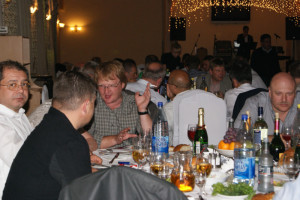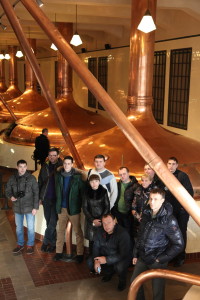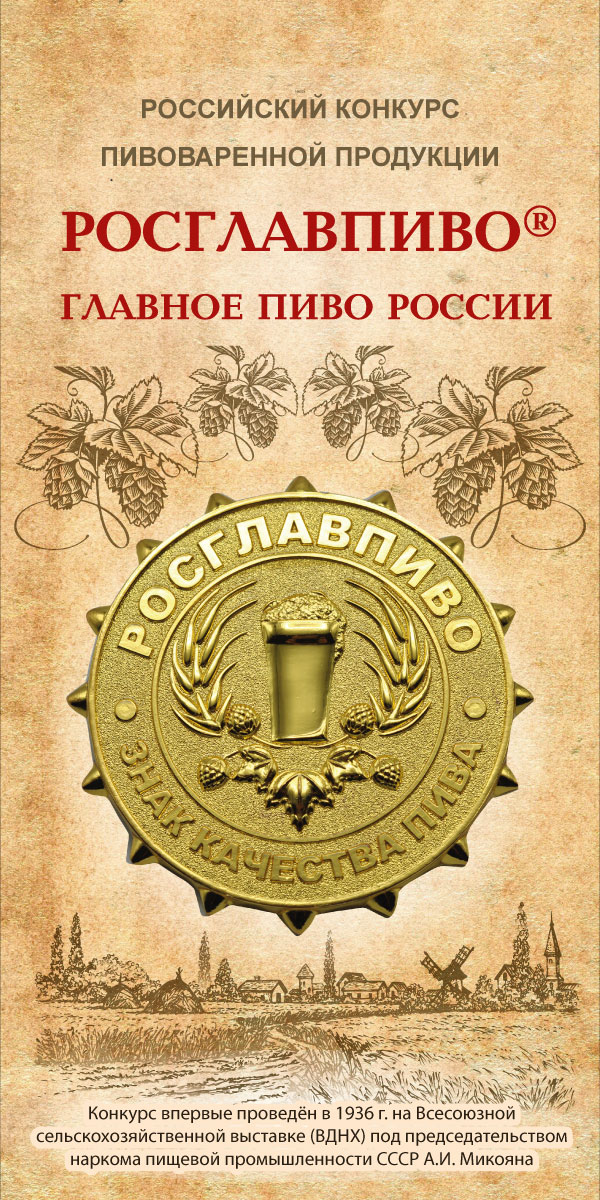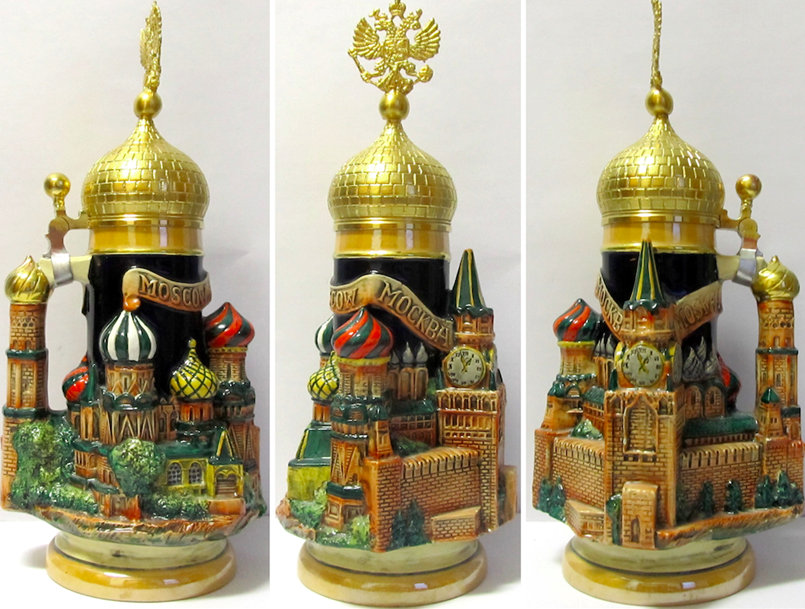A common sight for many European cities: a crowd of tourists, examining admiringly beer jugs in the shop window – from standard to high, some of them as tall as a man and like seven-league boots or a medieval knight. All these are souvenirs that collectors are chasing all over the world. In everyday life, faceted jugs and glasses are often used.
It is held that emerging of classical beer jugs from clay, faience with closing top and a special locking device connects with awful recollections of plague, raged in Europe in 1340-1380, claimed 25 mln. of lives.
It is worth noting that during plague, some German principalities passed laws, according to which burghers had to do all in order to prevent the spread of disease. For example, it was prohibited to keep pigs near roads and bad meat had to be marked in order buyers could take it at their own risk. Besides, just then, beer purity law according to which barley, wheat, malt and water had to be used in brewing, was created. Often cabbage, dry bread and chicken eggs were used in beer production. It was connected with a fact that after plague, due to population reducing, there was overproduction of grain and surplus was widely used in brewing.
Against flies
But these, first in Europe, sanitary norms didn’t touch vessels for beer, wine, water and milk. And in 1500, when a mass of flies occupied Central Europe, German dukes created laws according to which all vessels should be closed with a special cover.
By that time, real beer boom settled over the territory of Germany. According to some data, beer consumption level was 2 l. per day. For example, in Hamburg, there were over 600 breweries producing 25 mln.l. of beer per year with job places for a half of citizens of the town.
After while, makers created special locking devices and hinges for beer jugs in order not to touch a jug by fingers. So, original beer jugs appeared. Even at that time, every German had to come to a beer house with his own jug.
For true patriots
First beer jugs made of adobe clay or wood, so it was soaked in and began smelling bad. Rich burghers used stannous, silver and glass jugs that were not popular due to high prices. Besides, the church prevented any scientific experiments, so opposed creation of vessels from new materials. And only during Renascence, beer jug production began developing. At this time, calciners were created thanks to which it was possible to work with nonporous clay at high temperatures. It was often used by craftsmen, making blue, purple, chocolate and golden glaze.
High cost of these jugs didn’t confuse craftsmen. Besides, beer jugs were decorated with historical, allegoric and biblical scenes. True patriots and prince’s armed forces preferred images of coats of arms and battle pieces.
In Renascence time, there were exotic beer jugs from coconut with antitoxic characteristics. Coconut was polished, carved and enchased with gold plating. Every court had this beer jug in collection at that time.
Wars and beer
Producers of beer jugs from Cologne and Koblenz got export going abroad, including China and got chinaware in return. But civil commotion in the Celestial Empire disrupted all links and chinaware supplies stopped. Germans didn’t know how it was made and created faience for beer.
German faience differed in strength from chinaware and won popularity quickly. The Chinese tried to return to German market later but didn’t manage to do it in full. In the beginning of XVIII century, Europe had their own chinaware for making of beer jugs. This experiment continued for two decades but was not successful; vessels were affordable only for rich men. Glass vessels were not popular by the same reason. It bears noting that there were times where beer jugs disappeared. During Thirty Years’ War (1618-1648) all breweries in the north of Germany were destroyed. As a result, the Germans switched to apple cider and wine and only Bavaria didn’t change the tradition. It became the key beer region in the Central Europe and continues to be it now.
As on the swings
By the early XIX century, classical beer jugs reminded pieces of art that could be placed to the museums but not on the tables of beerhouses. But after Napoleonic wars in Europe, led to destruction of high life, expensive beer jug production reduced. The middle class preferred to use common vessels decorated with scenes from urban life, company logos, weapon, battle pieces.
New blow to industry was made after closing of monastic breweries. They were replaced with small plants, producing high quality beer. Glass jugs gained popularity in order not to hide quality of the product.
Faience producers also didn’t manage to stand against competitors, some shut down, others consolidated. So, thanks to merging of faience producers Francois Boch and Nicolas Villeroy, the company Villeroy & Boch, the leading producer of consumer, constructive, industrial and mettlach ceramics, emerged in 1863. Their products were popular in Europe and exported to America.
And logo on the cover
Producers of traditional beer jugs often crossed over to certain consumer groups, for example military men. Prussian soldiers and officers, got victory during the war with France in 1870-1871, began ordering special beer jugs with battle scenes, surnames of comrades, regiment numbers, battle-cries like “Viva regiment named as guards!” etc. Students were also in step with military men: every student union placed own emblems on the jug. Famous German painters made sketches for painting of these beer jugs.
In the late XIX century, producers of beer jugs were supported by owners of breweries for ad purposes. Well-known beer brands Spaten and Franziskaner were among the first to advertise their products.
Today the tradition is carried on but logo of companies is placed on any vessels. Besides, jugs began losing popularity and peoples switched to glasses of different forms and volumes. The Belgians knocked off spots and developed glasses for each of 900 famous beer brands.
On this particular year in the year of 500th anniversary of Beer Purity Law, Barley, Malt, Hops and Beer Union ordered a unique limited edition of beer jugs (Moscow Limited Edition) that will be presented to partners of the Union – best representatives of the production chain “malting barley – beer”.




























No comments